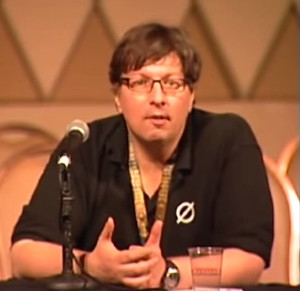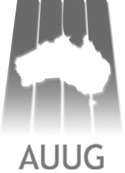
A Unix shell is a command-line interpreter or shell that provides a command line user interface for Unix-like operating systems. The shell is both an interactive command language and a scripting language, and is used by the operating system to control the execution of the system using shell scripts.
Robert H. Morris Sr. was an American cryptographer and computer scientist.

Mary Ann Horton, is a Usenet and Internet pioneer. Horton contributed to Berkeley UNIX (BSD), including the vi editor and terminfo database, created the first email binary attachment tool uuencode, and led the growth of Usenet in the 1980s.
Stephen C. Tweedie is a Scottish software developer who is known for his work on the Linux kernel, in particular his work on filesystems.
The USENIX Annual Technical Conference is a conference of computing researchers sponsored by the USENIX association. The conference includes computing tutorials, and a single track technical session for presenting refereed research papers, SIG meetings, and BoFs.

Matt Blaze is an American researcher who focuses on the areas of secure systems, cryptography, and trust management. He is currently the McDevitt Chair of Computer Science and Law at Georgetown University, and is on the board of directors of the Tor Project.

Dan Farmer is an American computer security researcher and programmer who was a pioneer in the development of vulnerability scanners for Unix operating systems and computer networks.

Sixth Edition Unix, also called Version 6 Unix or just V6, was the first version of the Unix operating system to see wide release outside Bell Labs. It was released in May 1975 and, like its direct predecessor, targeted the DEC PDP-11 family of minicomputers. It was superseded by Version 7 Unix in 1978/1979, although V6 systems remained in regular operation until at least 1985.

The League of Professional System Administrators (LOPSA), founded in 2004, is a professional association for IT Administrators.
A network telescope is an Internet system that allows one to observe different large-scale events taking place on the Internet. The basic idea is to observe traffic targeting the dark (unused) address-space of the network. Since all traffic to these addresses is suspicious, one can gain information about possible network attacks as well as other misconfigurations by observing it.

AUUG was an Australian association and users' group. It described itself as the organisation for Unix, Linux and Open Source professionals. Its aim was to build a community of those interested in open systems and open standards. The newsletter AUUGN is pronounced.
Randy Howard Katz is a distinguished professor emeritus at University of California, Berkeley of the electrical engineering and computer science department.

Marcus J. Ranum is a computer and network security researcher. He is credited with a number of innovations in firewalls, including building the first Internet email server for the whitehouse.gov domain, and intrusion detection systems. He has held technical and leadership positions with a number of computer security companies, and is a faculty member of the Institute for Applied Network Security.
Tiger is a security software for Unix-like computer operating systems. It can be used both as a security audit tool and a host-based intrusion detection system and supports multiple UNIX platforms. Tiger is free under the GPL license and unlike other tools, it needs only of POSIX tools, and is written entirely in shell language.
;login: is a long-running technical journal published by the USENIX Association, focusing on the UNIX operating system and system administration in general. It was founded by Mel Ferentz in 1975 as UNIX News, changing its name to ;login: in 1977. Currently, issues from 1997 through the present are available online directly from USENIX, whereas issues between 1983 and 2000 have been archived in the Internet Archive since 2018.

ACM SIGOPS is the Association for Computing Machinery's Special Interest Group on Operating Systems, an international community of students, faculty, researchers, and practitioners associated with research and development related to operating systems. The organization sponsors international conferences related to computer systems, operating systems, computer architectures, distributed computing, and virtual environments. In addition, the organization offers multiple awards recognizing outstanding participants in the field, including the Dennis M. Ritchie Doctoral Dissertation Award, in honor of Dennis Ritchie, co-creator of the C programming language and Unix operating system.

The Software Tools Users Group (STUG) was a technical organization started in 1976, in parallel with Usenix. The STUG goal was to develop a powerful and portable Unix-like system that could be implemented on top of virtually any operating system, providing the capabilities and features of Unix in a non-proprietary system. With its focus on building clean, portable, reusable code shared amongst multiple applications and runnable on any operating system, the Software Tools movement reestablished the tradition of open source and the concepts of empowering users to define, develop, control, and freely distribute their computing environment.
Dawson R. Engler is an American computer scientist and an associate professor of computer science and electrical engineering at Stanford University.

Human Computing Resources Corporation, later HCR Corporation, was a Canadian software company that worked on the Unix operating system and system software and business applications for it. Founded in 1976, it was based in Toronto.












